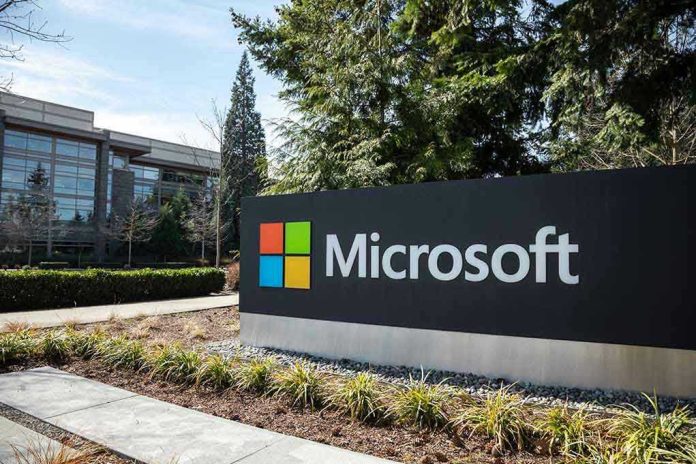
Imagine waking up to discover that your trusty computer has just become a digital sitting duck—no more security shields, no more lifelines, and hackers circling like sharks in the water.
Story Snapshot
- Microsoft will officially end support for Windows 10 on October 14, 2025, impacting hundreds of millions of devices.
- Users face urgent choices: upgrade to Windows 11, enroll in Microsoft’s Extended Security Updates (ESU), buy a new device, or risk running without support.
- Microsoft is offering, for the first time, a free year of ESU to many users—breaking precedent with past support cutoffs.
- The coming transition exposes hidden costs of software obsolescence, security, and forced hardware upgrades.
The Clock Runs Out on Windows 10 Security
On October 14, 2025, Microsoft draws a hard line: Windows 10, the workhorse operating system for nearly a decade, officially moves to end-of-life status. That means no more routine security patches, bug fixes, or technical support for the vast majority of users. Cybersecurity experts agree, unsupported systems become prime targets for attacks overnight. The global installed base—hundreds of millions of machines—faces an unprecedented risk profile with a single flip of the calendar. The critical question: what will you do before the digital drawbridge comes up?
Microsoft’s last big support cutoff—Windows 7—triggered a flurry of frantic upgrades, expensive extended support fees, and a new generation of malware targeting the stragglers. This time, Microsoft throws a curveball: a free year of Extended Security Updates (ESU) is on offer for many users. For the first time, home users as well as businesses can enroll—at least for the first year—without paying a premium. But the clock will keep ticking, and after twelve months, the bill comes due or the risks escalate further. The move has been met with both relief and criticism. Some tech analysts praise Microsoft for learning from the past; others see it as a way to nudge stubborn users toward newer hardware and operating systems.
Who Decides What You Upgrade—and When?
The power dynamic is clear: Microsoft alone controls the support timeline, and users must adapt or accept new risks. Windows 10, once touted as the “last version of Windows,” now gets the guillotine. The company’s motivations are straightforward—reduce support costs and drive adoption of Windows 11, which arrives with stricter hardware requirements. Many perfectly functional PCs suddenly can’t upgrade, and users are left weighing the cost of new hardware against the hassle and security risks of staying put. IT service providers and cybersecurity experts urge organizations and individuals to act decisively: upgrade if possible, enroll in ESU if not, or prepare for a digital Wild West where malware and ransomware roam unchecked.
Home users, small businesses, and critical infrastructure operators are all in the crosshairs. The stakes are highest for those who rely on legacy systems—healthcare, utilities, and manufacturing—where hardware upgrades are costly or impossible. The broader market faces a potential wave of e-waste as millions of still-serviceable devices become obsolete overnight. The digital divide widens, as those unable to afford new hardware are left behind or exposed.
The Real-World Fallout: Security, E-Waste, and Tough Choices
Short-term, the risks are clear: unsupported Windows 10 devices become low-hanging fruit for cybercriminals. Malware, ransomware, and data breaches are all but guaranteed to spike as attackers exploit unpatched vulnerabilities. Microsoft’s ESU program offers a temporary safety net, but only for those who know about it and take action. Meanwhile, the stricter hardware requirements of Windows 11 mean that many users—especially those with older PCs—face the prospect of expensive upgrades or switching operating systems entirely. Alternatives like Linux or ChromeOS beckon, but compatibility and learning curve issues can be daunting for the average user.
The long-term impact reaches beyond individual users. The forced obsolescence of millions of machines creates a looming e-waste crisis, raising questions about the sustainability of the software lifecycle. Economists warn of the financial burden on small businesses and families. Social advocates highlight growing disparities in secure technology access. Policy debates heat up over the right to repair and the ethics of planned obsolescence. For the cybersecurity industry, the challenge is clear: how to protect a vast, fragmented ecosystem of unsupported devices in a world where threats evolve faster than ever.
What Experts Advise: Don’t Wait for the Deadline
Security professionals and IT experts offer blunt advice: don’t wait until October 14, 2025, to make your move. If your device meets Windows 11 requirements, upgrade now and avoid the rush. If not, enroll in Microsoft’s ESU program for at least a year of extra protection. For those unwilling or unable to leave Windows 10, implement best-in-class security practices—strong firewalls, reliable antivirus, and strict web hygiene. For the technically adventurous, exploring Linux or ChromeOS may offer a lifeline, but expect some bumps along the way. The worst option? Ignoring the problem and hoping for the best. In the new threat landscape, inaction is the riskiest move of all.
For those facing tough choices, the bottom line is simple: the end of Windows 10 support is more than a technical deadline—it’s a wake-up call about our relationship with technology, security, and the companies that shape our digital lives. The clock is ticking, and every user—from the home office to the boardroom—must decide which side of the digital divide they’ll land on when support ends for good.
Sources:
Engadget: Windows 10 support ends tomorrow, but here’s how to get an extra year for free
Microsoft: Extended Security Updates for Windows 10
Technibble: Windows 10 Updates Being Extended Past October 2025









